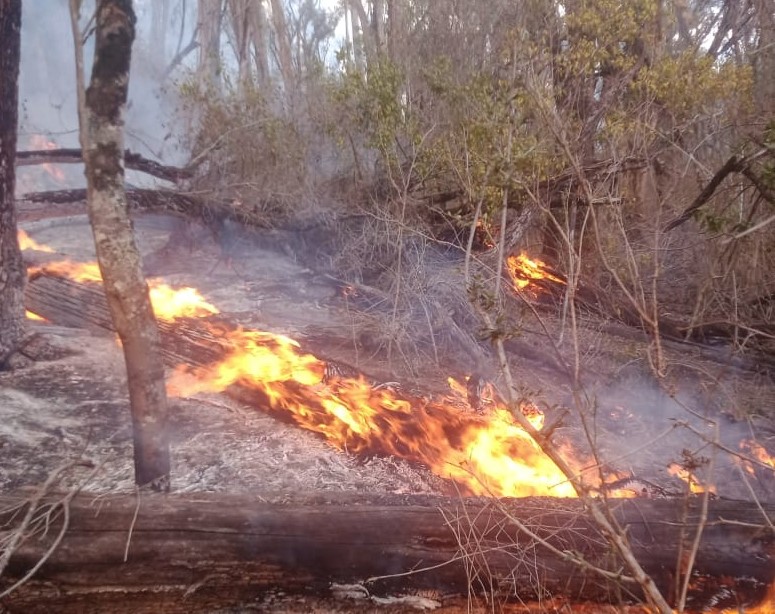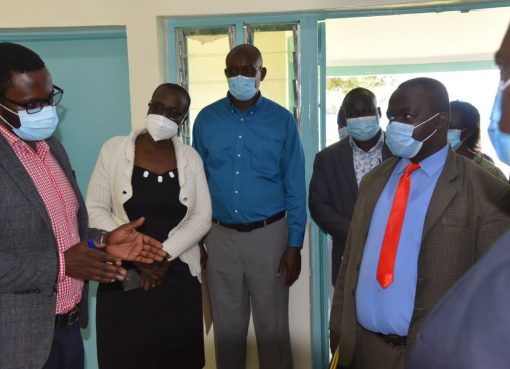The Kenya Forest Service (KFS) is calling for assistance from all stakeholders to help put out fires that have been ravaging the Aberdare National Park for two weeks now.
Nyeri KFS Ecosystem Conservator Mr. Moses Wahome said concerted efforts involving the Kenya Wildlife Service, National Youth Service, the County Government Fire Department and members of the public are yet to contain the flames that have cleared hundreds of hectares of shrubs and moorland due to the prevailing drought and raging winds.
Wahome warned of a possible ecological catastrophe from the ongoing fires since the affected area is a crucial water tower with several rivers drawing their waters from there.
He said unless the remaining part of the expansive water tower is saved from the fires, it may spell doom for the country currently under the grip of one of the worst droughts in her history.
“I am somewhere deep in the forest where we have been fighting the fires for the last two weeks now. The fires are still raging and we need as many people on board as possible since when the moorlands are destroyed it means with percolation of water when it rains the water will be limited and consequently the rivers will go down,” he told KNA on phone.
Last week KWS officers had reportedly been battling round the clock to rein in the wildfires that had ravaged over 40,000 acres of Aberdare within a week.
Addressing reporters on Friday, KWS Assistant Director of Mountain Conservation Bakari Mungumi noted that the wildlife agency, in collaboration with KFS officials from Nyeri and Nyandarua counties as well as Kenya Pipeline and Rhino Arch officials had jointly sent out more than 200 personnel to help in putting out the fire.
Two KWS officials were reported to have died in an accident as they were retiring from duty after battling the fires for hours. Among provisions urgently needed include water and food as those battling the blaze cannot leave the scene.
Wahome also appealed for private water bowsers to complement the ones the county government has supplied in order to help replenish the helicopter being used to douse the blaze from the air.
“We are using the National Youth Services from Gilgil, the community, Kenya Forest Service, the Kenya Wildlife Service since the area under fire is a national park. But as resource managers we need more to come on board to assist out even with food and water since the fighters are literally sleeping in tents in the forest,” he appealed.
The officer has also said they are yet to ascertain the genesis of the blaze at this time but added that they suspect it is out of human activity. The Aberdare ecosystem has five forest stations covering an area of 50,964.22 hectares that include Muringato, Kabage, Zaina, Kiandongoro and Zuti.
In January last year a wildfire raged in the park for two days destroying at least 1,480 acres of vegetation in its wake before it was extinguished by dozens of forest rangers, firefighters and volunteers.
Preliminary investigations pointed to an act of arson.
The park was etched in history when Britain’s Queen Elizabeth II, then a princess on a 1952 visit to Kenya, received news of her father’s death while staying at the Treetops hotel, a remote game-watching lodge built high into a tree in the Aberdare Forest.
It plays host to spectacular waterfalls and lush bamboo jungles as well as a variety of wildlife including leopards, elephants and critically endangered black rhinos. Aberdare is the third highest mountain range in Kenya, reaching a summit of just over 4,000 metres (over 13,100 feet).
By Samuel Maina





